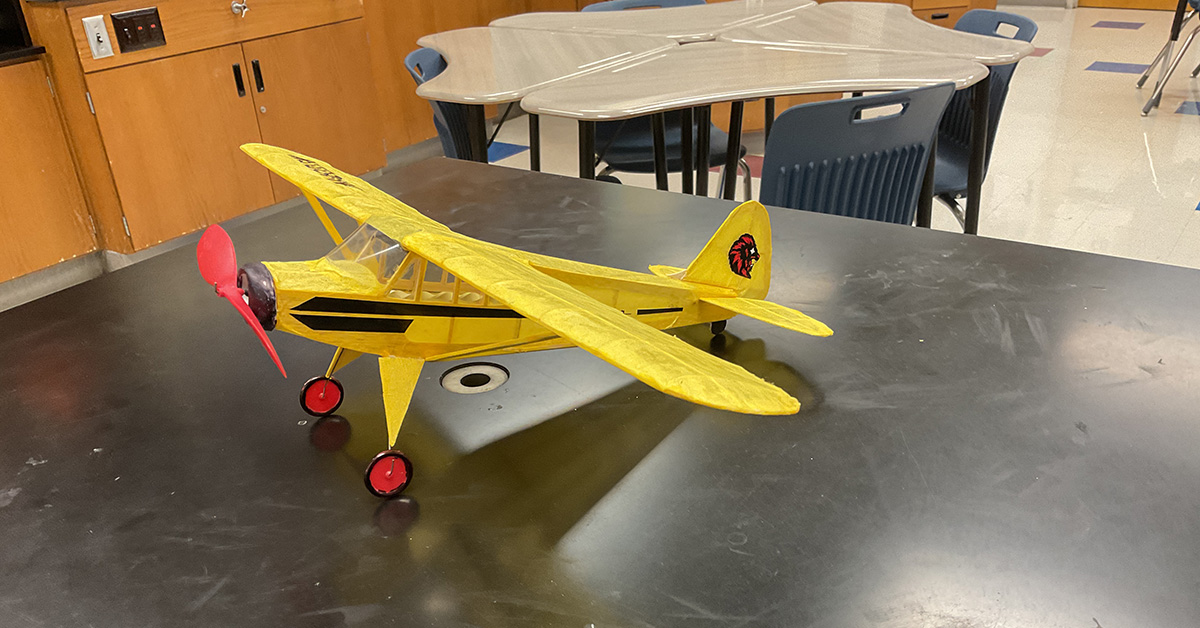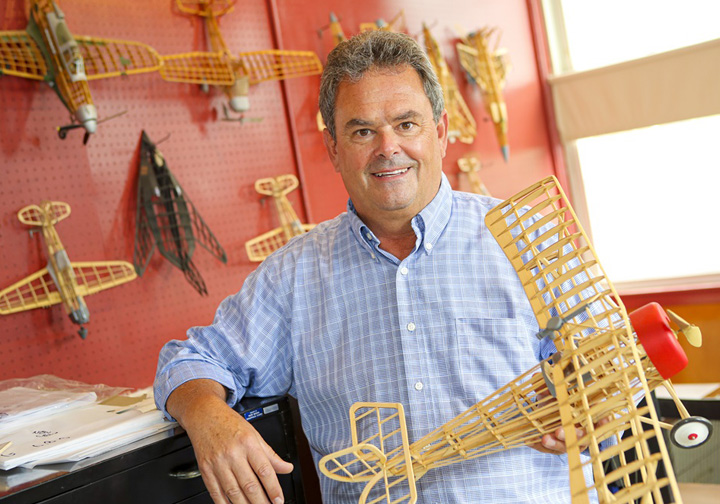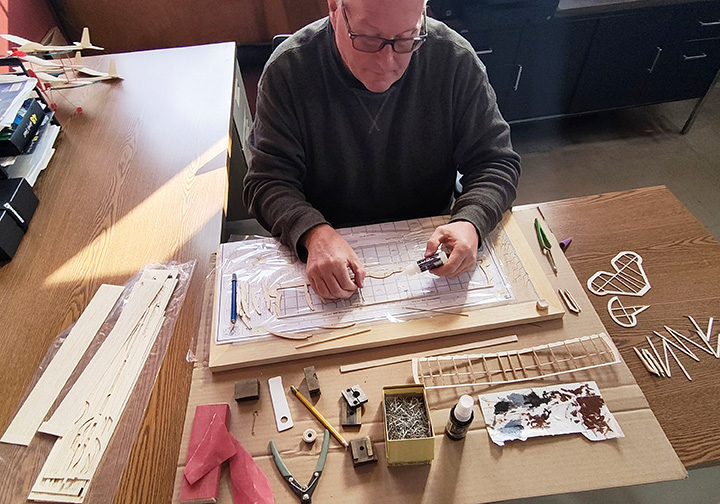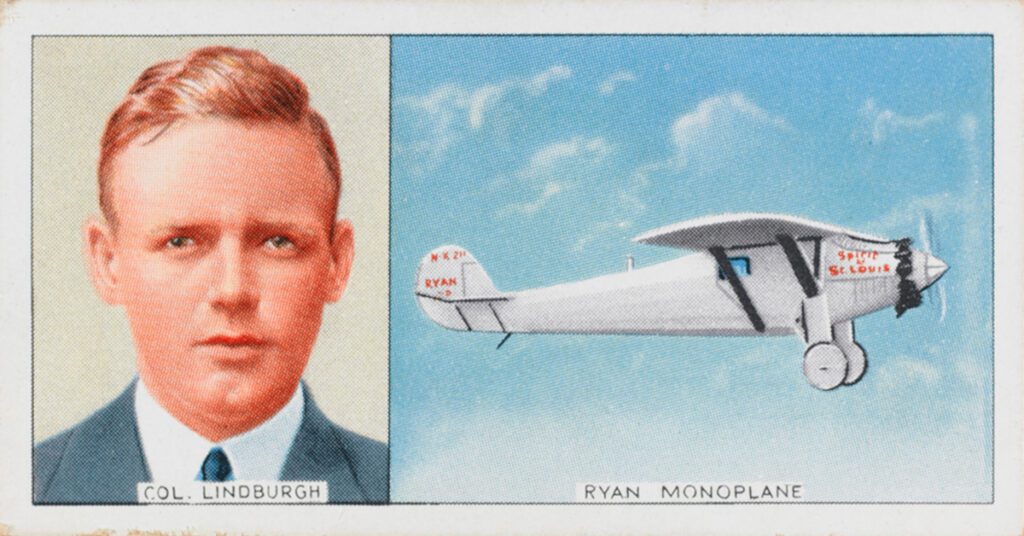For more than a decade, high school science teacher Scott Griffis has been inspiring his students to see science not just as formulas in a textbook, but as something they can build with their own hands. His secret tool? Guillow’s balsa wood aviation model kits.
From Chemistry Class to the Science of Flight
After years of teaching college-bound chemistry students, Scott began working with physical science classes that weren’t necessarily headed for college. To reach them, he turned to project-based learning. When he discovered that his textbook included a unit on flight, it felt like a perfect fit.
“I love flying and building radio-control airplanes,” Scott explains. “So, I decided to have the students build and fly a rubber band-powered free-flight model plane. At first, we used the Javelin and Lancer kits, but before long, I had them building replicas of real airplanes.”
STEM Concepts in Action
The project gives students a tangible way to engage with big ideas in science. Along the way, they explore:
- Forces of flight — lift, weight, thrust, and drag
- Newton’s Laws of Motion
- The Bernoulli Principle and Coanda Effect
- Engineering design terms like stringers, formers, dihedral, and torque
“The students are amazed that real airplanes are made in the same fashion as the model kits,” Scott says.
Measuring, Testing, Learning
While the focus isn’t heavy on math, students still apply measurement and calculation skills. They determine wing loading, aspect ratio, and even speed and thrust. In doing so, they see firsthand how numbers connect to performance.
Connecting to History
Scott also pushes his students to look beyond the workbench. Each model ties into aviation history, whether it’s a WWI Fokker Eindecker, WWII bombers and fighters, or civilian classics like the Piper Cub and Cessna. Researching the plane they’re building makes the project richer and more personal.
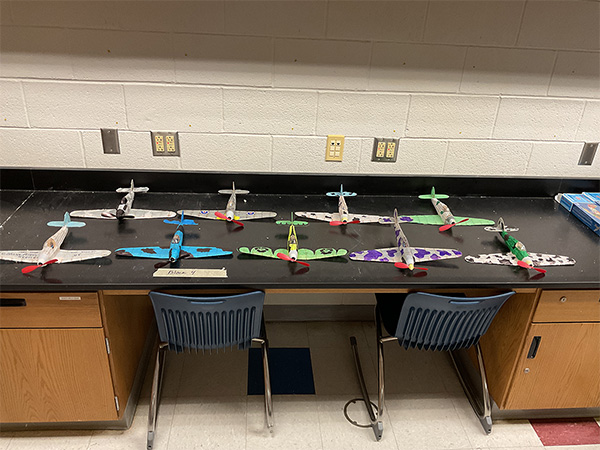
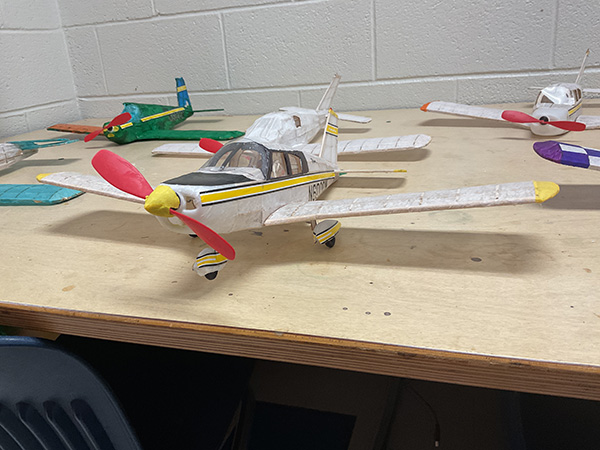
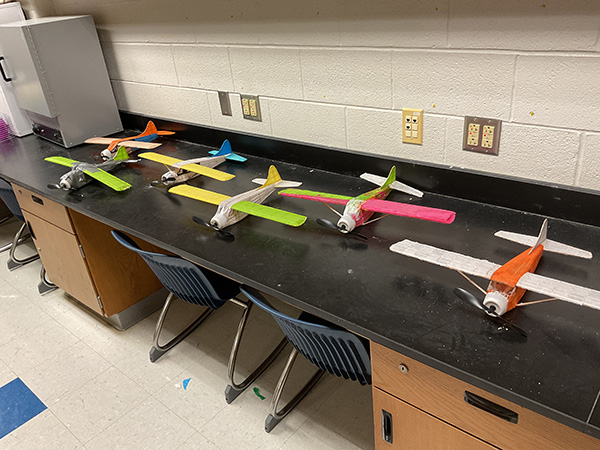
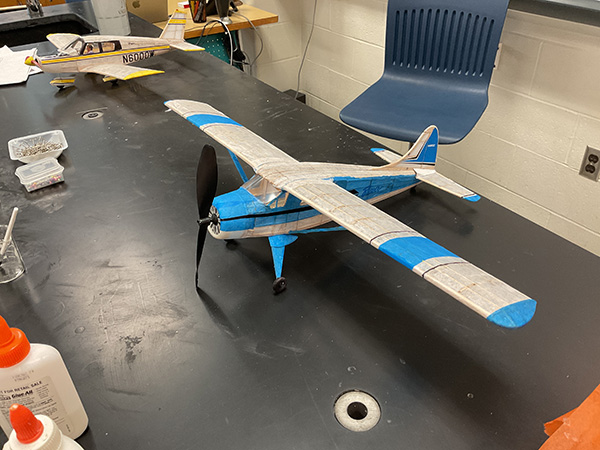
Engagement and “Aha!” Moments
Not surprisingly, the hands-on nature of the project generates high energy in the classroom. “Most students are more engaged because of the nature of the lesson,” Scott shares. The most potent moments often happen when the covering is applied to the frame: “They see the shape truly take form and realize that real planes are built from stringers and formers too. They’re always amazed at how well their planes fly—and that they made them themselves.”
Teamwork, Creativity, and Problem-Solving
By working in small groups, students develop collaboration skills, share tasks, and tackle problems as a team. They also showcase their creativity through innovative project cover designs or even documentaries about their work.
Video provided by Scott Griffis, a Chemistry Teacher at New Oxford High School part of the Conewago Valley School District in South Central PA.
Overcoming Challenges
Clearly, a project like this isn’t without its challenges—time, cost, and classroom management being just a few. Scott sets aside 10–15 full class periods for the unit, which is a substantial time commitment. “My main advice is to be genuinely passionate about the project,” he says. “The kids will have a blast, and everything else will fall into place.”
Measuring Success
Scott evaluates students on two fronts: their construction of the plane and the documentary they create about the process. It’s a way to blend technical skills with communication and reflection.
Advice for Other Teachers
For STEM teachers curious about trying something similar, Scott suggests starting small. “Before airplanes, I had students build hot air balloons, balloon-powered cars, model rockets, mousetrap cars, and popsicle stick bridges. None of those projects come close to the time or skill needed for a semi-scale rubber band-powered balsa kit. But once students are ready, it’s an incredible experience.”
Perhaps most importantly, Scott encourages teachers not to fear failure. “Every year the project evolves. I learn from my students just as they learn from me.”
Inspiring the Next Generation
Through projects like this, Scott Griffis has demonstrated that Guillow’s model airplanes are more than just hobbies; they are bridges between curiosity and understanding, history and innovation, theory and flight.
For teachers looking to make STEM take off in their classrooms, Scott’s story is proof that sometimes the best lessons come with balsa wood, glue, and the thrill of watching a student-built plane soar.

